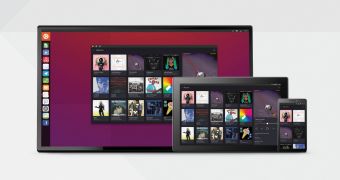Unity 8 is on its way to Ubuntu 16.04 LTS, and a lot of progress has been made. One of the features that are expected to land in more stable form is platform convergence. Canonical is not the only company that's working towards this goal, but it's the only one that's doing it right.
Platform convergence is a multi-faceted feature, and it's not just about making a mobile device work as a PC. Indeed, this is one of the more obvious and interesting outcomes, but there is at least another feature that's not getting enough attention.
Right now, only the Ubuntu Touch platform has a stable implementation of the Unity 8 desktop environment and the Mir display server, but great progress has been made to bring these two to the desktop. Once they become fully implemented, developers will be able to build apps that work on both platforms, which in itself is an achievement.
The goal is to have a single code base for both systems, and eventually, build a single OS that can be deployed both on the desktop and the phone.
Microsoft is trying something similar
Some of the Linux users might have noticed that Microsoft is trying to implement a similar function under the name of Continuum, but that 's a rather different approach. The Windows OS on the phone is similar enough to the one for the desktop, but the company is a long way from having a singular OS.
When a Windows phone user connects their device to a display, it projects an "enhanced" start screen and not the full OS. It's also not capable of running regular desktop apps, and there is no indication that this is going to change.
Motorola tried something similar with Atrix device, which would turn into a full Android desktop, but it failed. This happened in 2011, so it's possible that the market or the hardware wasn't ready for this.
The major difference between Ubuntu and Windows is the fact that one projects the full desktop experience, and the other one just mimics one. There is nothing wrong with what Microsoft is trying to achieve, but saying that it's the same with the Ubuntu convergence is just wrong.
A Bq-powered device that will be able to output video just like Nexus 4 is in the works, and it has been announced for 2016. With a little luck and some coordination with Canonical, we might see it just in time for the release of Ubuntu 16.04 LTS, in April.

 14 DAY TRIAL //
14 DAY TRIAL //